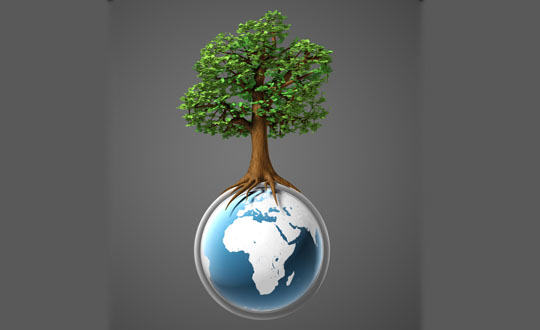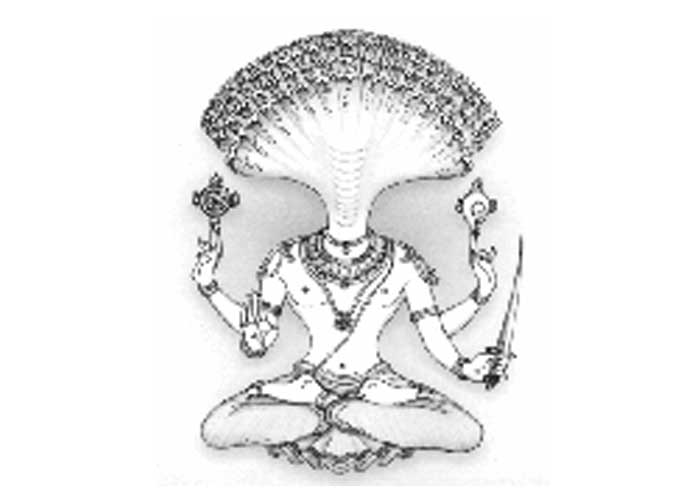“Rising seas, caused by global warming, have for the first time washed an inhabited island off the face of the Earth,” says a report in Britain’s The Independent newspaper in 2006. “The obliteration of Lohachara island, in India’s part of the Sundarbans where the Ganges and the Brahmaputra rivers empty into the Bay of Bengal, marks the moment when one of the most apocalyptic predictions of environmentalists and climate scientists has started coming true. As the seas continue to swell, they will swallow whole island nations, from the Maldives to the Marshall Islands, inundate vast areas of countries from Bangladesh to Egypt, and submerge parts of scores of coastal cities. It has been officially recorded in a six-year study of the Sunderbans by researchers at Calcutta’s Jadavpur University. So remote is the island that the researchers first learned of its submergence, and that of an uninhabited neighbouring island, Suparibhanga, when they saw they had vanished from satellite pictures.”
“Eight years ago, as exclusively reported in The Independent on Sunday, the first uninhabited islands – in the Pacific atoll nation of Kiribati – vanished beneath the waves. The people of low-lying islands in Vanuatu, also in the Pacific, have been evacuated as a precaution, but the land still juts above the sea. The disappearance of Lohachara, once home to 10,000 people, is unprecedented.”
Excerpt from The New York Times, 2013 – “The level of the most important heat-trapping gas in the atmosphere, carbon dioxide, has passed a long-feared milestone, scientists reported, reaching a concentration not seen on the earth for millions of years.”
“It feels like the inevitable march toward disaster,” said Maureen E. Raymo, a scientist at the Lamont-Doherty Earth Observatory, a unit of Columbia University. “It takes a long time to melt ice, but we’re doing it,” Dr. Keeling said. “It’s scary.” His analysis revealed a relentless, long-term increase superimposed on the seasonal cycle, a trend that was dubbed the Keeling Curve.
These two reports give us a good idea of what our vedic seers seem to have foreseen. They knew of the impending catastrophe Man was likely to bring upon his own self in name of technology and development and so they had not only forewarned us but gave us the way, thousands of years ago, to evade such a situation. The way was to start respecting and conserving nature and the environment we live in.
Kalau dashsahasraante
Vishnu tajati medineem,
tadardham janhavi toyam,
tadhardham devta ganah.
– Skanda Purana
“At the end of 10,000 years of kaliyug, Lord Vishnu shall depart from the earth. Ganga shall vanish 5,000 years after this and all other deities shall follow suit after 2,500 years of Ganga’s departure.”
– Professor Ram Pujan Pandey Sampurnanand Sanskrit University, Varanasi
Today we find that prophecy taking shape. The 1,568-mile long river is slowly depleting itself of its water reserves as the very source of the river—the Gangotri glacier, which provides up to 70 per cent of the water – is shrinking at a rate of 40 yards a year. That’s twice as fast as it was two decades ago.
Concerns about our environment date back to 1962 when Rachel Carson wrote ‘Silent Spring’. This book focused on the enormity of ecological damage brought about by industrial waste being dumped into the rivers. In 1972, the papers by Barbara Ward and Rene Dubois, ‘Only One Earth’ brought to the fore the conflict between biosphere of Man’s inheritance and the techno-sphere of His creation. Since then, the voices of concern for the safe upkeep of this creation could not be silenced. The concern clearly is about keeping the environment liveable.
The vedic seers had considerable knowledge about various aspects of nature, their inter-relationships and how significant role of each was. Let us delve into their knowledge…
Vedic view on environment is well-defined in one verse of the Atharvaveda
Where three coverings of our surroundings are referred as Chandamsi: ‘Wise utilize three elements variously which are varied, visible and full of qualities. These are water, air and plants or herbs. They exist in the world from the very beginning. They are called as Chandamsi meaning ‘coverings available everywhere.’ It is no surprise then that The Environment (Protection) Act, 1986 defines the environment as follows: ‘Environment includes water air and land and the inter-relationship which exists among and between water, air and land and human beings, other living creatures, plants, microorganisms and property.’
Water is essential to all forms of life. It is one of the pre-requisites for life to exist. That’s why the vedic seers gave special emphasis to it and respected its various forms – rain, rivers, oceans…No surprises then that they showed great concern in keeping rivers free from pollution.
O God! Cast aside the vile man who pollutes rivers…
says the Yajurveda XXX 8
Vedic seers used to practice agriculture, which is clear from the following verse and for an obvious reason any individual engaged in agriculture knows the value of timely and plentiful rain.
I resort to agriculture and craft for removing poverty
and ministering happiness to all. May I feel joy in domestic life! May our houses be sufficiently commodious, airy,
fully comfortable and built in the middle of an open space Yajurved, chapter 1.11
Solar energy plays a vital role in photosynthesis in plants, a process by which plants make their food and in turn provide food to all other organisms, thus the vedic seer showed reverence towards Sun as well.
Learn carefully about the presence of Vaishwanar Fire
in us all. The same Agni/ Fire is located in all worlds and
the same is working through Vaishwanar Sun doing all kinds of work such as producing light, growth of
plants etc. Rig Veda 1/98/1
They were well aware about the relationship of Sun with the formation of clouds and feeding rivers with water, what is known as the water cycle.
O Gurudev! Just as strong, light-emitting Sun attracts
the waters of these rivers toward itself and having done so distributes them through clouds all over again on the land, so do you attract students and instruct them with éclat.
Rig Veda 7/34/10
What better could one offer in terms of their understanding of the Nature’s cycle around them than the following quote:
When the clouds cultivate the earth with its waters; then winds are blown (for the rain to fall), lightening is struck, vegetation comes to life and grows, sky pours the raindrops and the earth then gets ready for the welfare of the world. Rig Veda 5/83/4
Perhaps they knew the role played even by a single tree – a tree withstands the vagaries of nature – storms, downpours and floods – to protect the flora, fauna and soil. A tree provides for those around it – animals, birds and insects with food and shelter, as nurturer and healer. A tree purifies the air around it, binds the soil together, participates in causing rain, a tree decomposes to enrich the earth and it befriends the environment – which is evident from the way they desire the trees to be protected.
He, who rears the trees by erecting barriers round them…conduces to our happiness. Yajurveda XX 45
It is unfortunate that in the name of scientific advancement and material progress we have forgotten to show respect to the environment which forms basis of all life and to the only planet where we exist and have brought it to such a state where rivers are reduced to becoming sewer lines, where potable water is scarce, fresh fruits and vegetables have high concentrations of pesticides and the air that we inhale carries high levels of pollutants. Yet we remain oblivious to growing scarcity of these basic necessities of life.
The respect the vedic seers showed to nature was because they knew that environment for all living beings is like a womb of a mother the pollution of which would eventually spell doom on them only. And the main reason for the above has been the growing selfishness of man to want more and more on the underlying theory of profit and innovation – maximisation. To maximise profit one would have to cut costs and when we do that we cut our own lifeline. This is the basis of climate change – and the environment. So control your selfish urges and live like our ancestors did – in harmony with nature.
References
Environmental Concerns (The Vedas)-A Lesson in
Ancient Indian History
‘R P. SINGH (A Futbright Fellow & M.A. Qondon) & Ph. D. (London), formerly with the NCERT
Disappearing world: Global warming claims tropical
island-
http://www.independent.co.uk/environment/climate-change/disappearing-world-global-warming-claims-
tropical-island-429764.html
Heat-Trapping Gas Passes Milestone, Raising Fears
http://www.nytimes.com/2013/05/11/science/earth/carbon-dioxide-level-passes-long-feared-milestone.html?smid=fb-share&_r=0
Image: Freeimages.com





